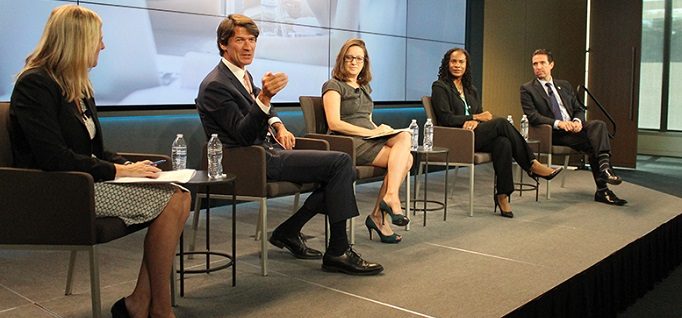Quick on the uptake
By Ellie Ashford
September 18, 2019
The key to successful business/community college partnerships.
Why do businesses like to team up with community colleges? Because they grasp what company partners need and respond quickly.
That’s key to creating successful partnerships with businesses, according to two panels of experts convened Sept. 12 by the Urban Institute in Washington, D.C.
When Amazon wanted to create an apprenticeship in cloud computing, it formed a partnership with Northern Virginia Community College (known as NOVA) because the college “had a clear understanding of market demands and a willingness to move fast,” said Shanika Hope, head of content and research at AWS Educate, Amazon Web Services.
It usually takes 18 to 24 months to create an academic program at a community college, Hope said. “We wanted this in six weeks, and they said yes.”
Since the partnership started in 2017, NOVA has trained 200 apprentices, said Steven Partridge, vice president for strategic partnerships and workforce innovation at NOVA. The apprentices are paid while they take part in the six-week program. Amazon also pays for their training. After one year, the apprentices become full-time employees.
That front-loaded approach is changing the mindset of companies, who generally wait until people earn a degree before hiring them, Partridge said.
Due to the success of its cloud computer partnership with Amazon, NOVA is starting conversations to expand its relationship as the company develops its new headquarters (HQ2) nearby.
NOVA assigned an administrator to be the point of contact for that project, Partridge said. Although the college hopes to form more apprenticeship programs with Amazon, “it’s not just about Amazon; it’s about filling the skills gap” in a region with 60,000 to 70,000 middle-skills jobs available.
Know employers’ needs
The number-one thing community colleges can do to develop strong partnerships is to “meet employers physically where they are,” said Molly Scott, principal research associate at the Urban Institute. Beyond that, Scott suggested inviting business representatives to events and have “get-to-know-you conversations that set you up for a more intense relationship.”
When developing a workforce partnership, Kenneth Adams, dean for workforce and economic development at Bronx Community College (BCC) in New York City, said the key question is: “What’s the problem the employer has that we can solve?”
For example, a company may be struggling to adhere to certain government regulations, he said. A community college partner could help identify the problem and develop solutions.
Evolving programs
Sometimes a program a college already offers can evolve into one that helps local industry needs. In a community with a high rate of opioid overdose deaths, BCC took the lead in training students – many of them formerly incarcerated drug addicts – to become “recovery peers” with an option to earn up to nine credits for a public health degree.
When local healthcare providers determined that the use of a recovery peer is reimbursable, “we saw an opening and created a training program,” Adams said. To make that partnership work, the college had to take the lead in providing extensive support to the participating students.
In another instance, K-12 leaders were having a hard time getting students interested in technology careers, so BCC launched a partnership involving 120 middle and high schools to train people in career awareness.
There’s more to the story! Read the full article in CC Daily.


